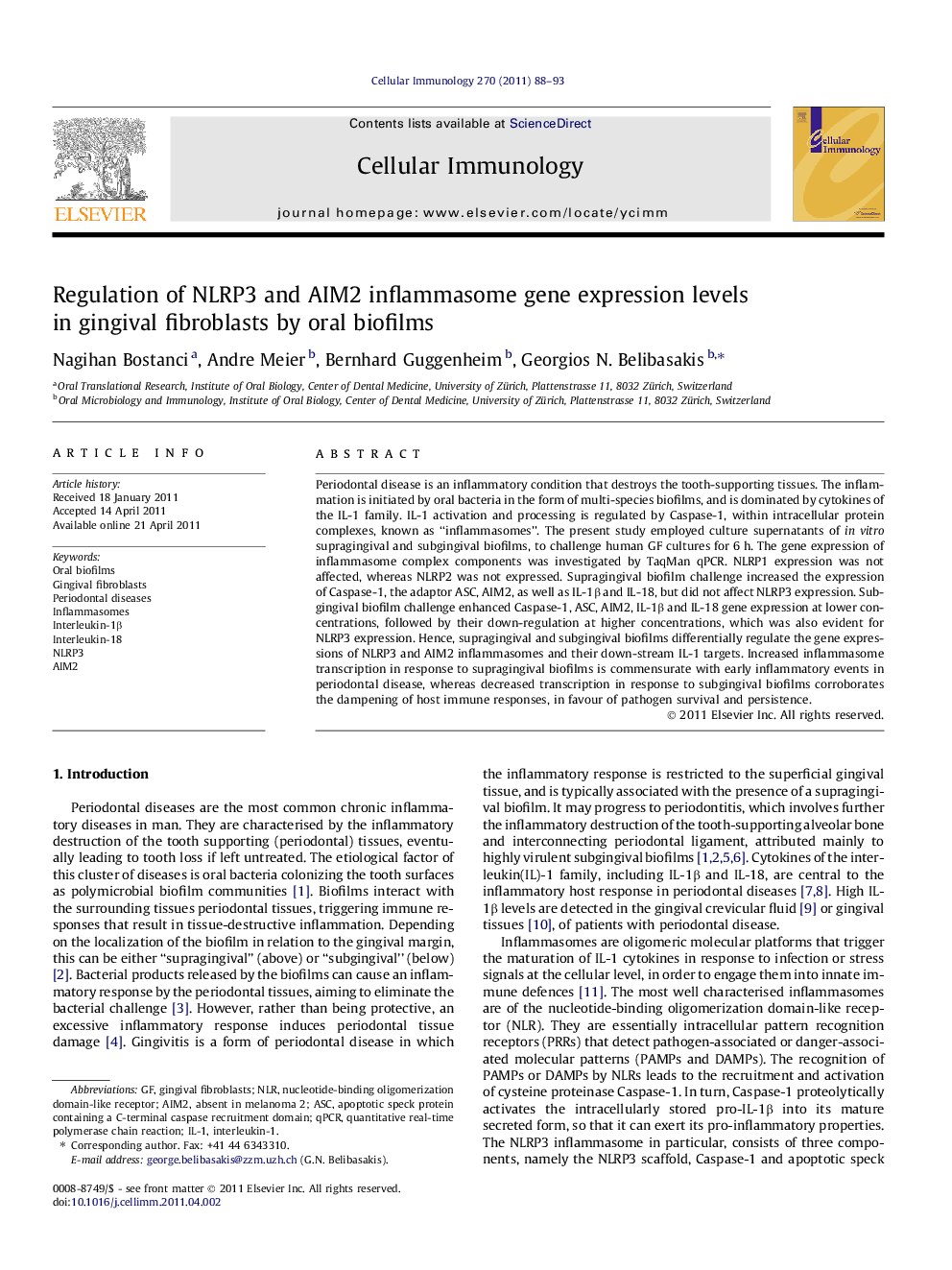| Article ID | Journal | Published Year | Pages | File Type |
|---|---|---|---|---|
| 2167447 | Cellular Immunology | 2011 | 6 Pages |
Periodontal disease is an inflammatory condition that destroys the tooth-supporting tissues. The inflammation is initiated by oral bacteria in the form of multi-species biofilms, and is dominated by cytokines of the IL-1 family. IL-1 activation and processing is regulated by Caspase-1, within intracellular protein complexes, known as “inflammasomes”. The present study employed culture supernatants of in vitro supragingival and subgingival biofilms, to challenge human GF cultures for 6 h. The gene expression of inflammasome complex components was investigated by TaqMan qPCR. NLRP1 expression was not affected, whereas NLRP2 was not expressed. Supragingival biofilm challenge increased the expression of Caspase-1, the adaptor ASC, AIM2, as well as IL-1β and IL-18, but did not affect NLRP3 expression. Subgingival biofilm challenge enhanced Caspase-1, ASC, AIM2, IL-1β and IL-18 gene expression at lower concentrations, followed by their down-regulation at higher concentrations, which was also evident for NLRP3 expression. Hence, supragingival and subgingival biofilms differentially regulate the gene expressions of NLRP3 and AIM2 inflammasomes and their down-stream IL-1 targets. Increased inflammasome transcription in response to supragingival biofilms is commensurate with early inflammatory events in periodontal disease, whereas decreased transcription in response to subgingival biofilms corroborates the dampening of host immune responses, in favour of pathogen survival and persistence.
► Gingival fibroblasts express NLRP3 and AIM2 inflammasomes. ► Inflammasomes are differentially regulated by supragingival and subgingival biofilms. ► IL-1 expression is differetially regulated by supragingival and subgingival biofilms.
